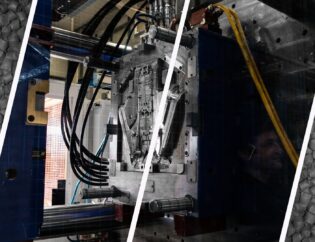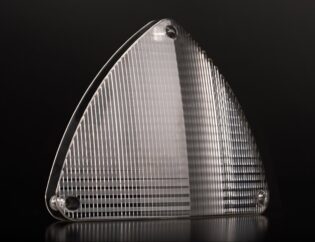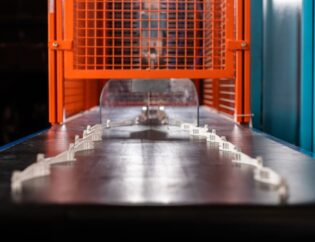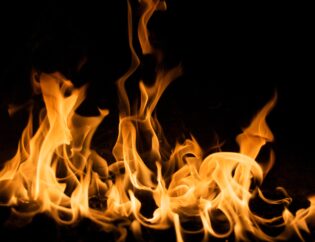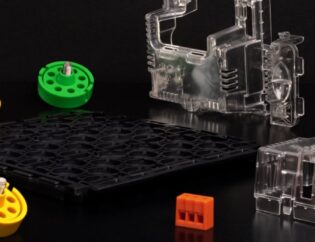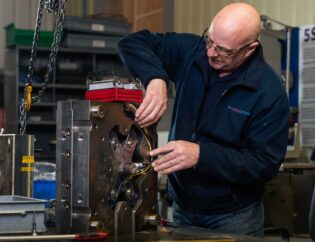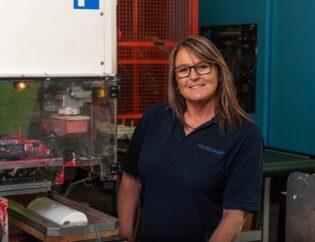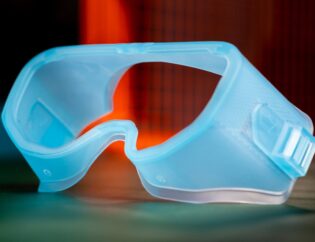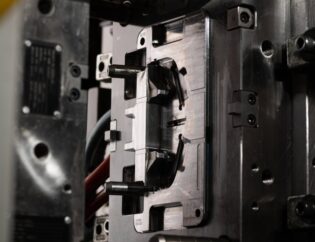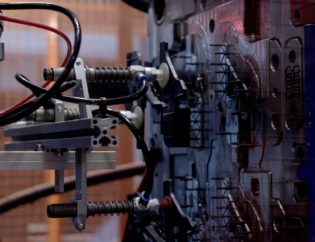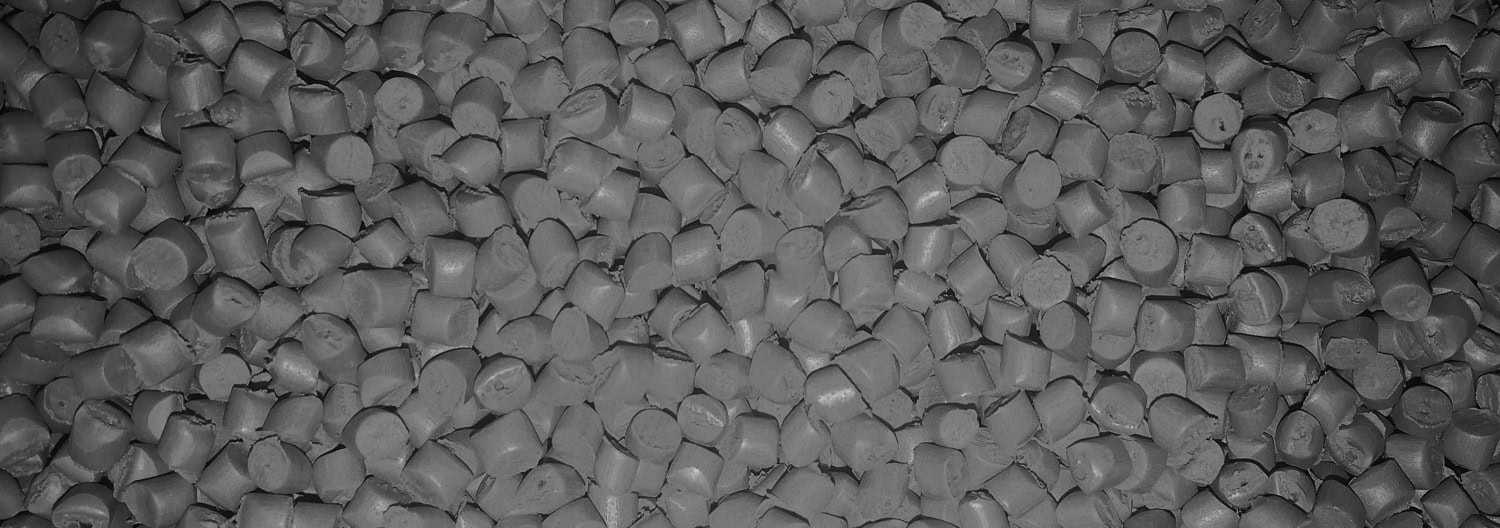
Below we’ve put together a list and descriptions of common polymers and their uses to give you more insight into materials that can be used in your project.
If you want to understand what terms such as monomer and thermoplastic mean, read our Polymer Term article for an insight into the definitions.
ABS is a block polymer made from 3 monomers, and this allows a wide variety of grades based on the relative proportions of each monomer.
The most important properties of ABS are its impact resistance and toughness, but those are not its only key properties:
- Good electrical properties;
- Rigidity;
- Chemical resistance;
- Gloss and hardness;
- Low water absorption;
- Good scruff and abrasion resistance;
- Good stain resistance;
- And easily coloured and decorated.
This engineering polymer is a popular material to use and has many applications due to its properties, including automotive interiors and exteriors, office equipment, consumer goods such as hairdryers and vacuum cleaners, plated decals, radiator panels and in sheet form, fridge liners and dinghy hulls.
The properties of Acetal (POM) makes it a highly versatile engineering material.
Acetal (POM) has a good balance of properties - high strength, stiffness, and toughness. Other properties of this polymer include:
- Low coefficient of friction;
- Good creep resistance;
- Exceptional recovery at low strains (Spring like);
- Good wear resistance;
- Exceptional resistance to hot and cold water.
The characteristics of the homopolymer and co-polymer differ for Acetal (POM):
- The Homopolymer has a higher tensile strength, flexural strength, fatigue resistance and hardness;
- The Co-polymer has a better dimensional stability, thermal stability, alkali and hot water resistance, lower coefficient of friction, better impact and wear resistance, particularly in the presence of moisture, and a broader processing window.
Acetal (POM) is used in applications such as mechanical parts, household goods, the automotive industry, and plumbing & installation.
Nylon is a synthetic thermoplastic polymer. One of the most common variations of Nylon is PA66, other variants of this polymer include PA6 and glass-filled (GF). Drying the material is required for the successful moulding of this material.
This polymer has a good balance of properties, including wear resistance, good long-term temperature resistance, low coefficient of friction - slides easily, chemical resistance and impact strength.
PA6 has higher impact strength than PA66, and PA66 has higher heat resistance than PA6.
The addition of glass to nylon makes it very stiff. The properties of Glass Filled (GF) nylon are different to other variants as well, such as:
- Increased tensile and strength;
- Increased stiffness;
- Increased creep resistance;
- Reduced notch sensitivity;
- Higher resistance to cracking than Aluminium and Zinc.
Nylon has many applications, including in the automotive, mechanical, consumer and electrical industries to name a few.
This polymer is considered to be one of the most versatile and one of the cheapest polymers available. There are two major types of PP available: Homopolymer and Copolymer.
The characteristics of PP are:
- High melting point;
- Doesn’t react to water, detergents, acids or bases, so won’t break down easily;
- It’s resistant to cracking and stress, even when flexed;
- Low coefficient of friction;
- Non-toxic;
- And tough and durable.
It is used in every market sector that uses plastic, including household goods, as microwave containers; automotive, such as car bumpers; medical uses; hinges; packaging; and Industrial applications, such as pipes and tanks.
PC is used to produce a variety of materials and are particularly useful when impact resistance and/or transparency are a product requirement.
The properties of a PC include:
- Its transparency, which allows internal transmission of light nearly in the same capacity as glass;
- High impact resistance;
- Good electrical properties;
- Lightweight;
- Chemical resistance;
- Heat resistance;
- And a natural UV filter.
PC has high compatibility with other polymers, and it can be used in blends, such as PC/ABS, PC/PET and PC/PMMA. At MGS, we commonly use PC/ABS.
Applications of this material can include bullet proof glass; plastic lenses in eyewear, in medical devices, automotive components, protective gear, greenhouses, and external lighting fixtures.
Other Materials
Other plastics to cover are TPE, a plastic with similar characteristics to rubber, and PVC, which has two basic forms: rigid and flexible. Rigid PVC can be used for applications such as drain pipes, and flexible PVC can be used for applications such as mats.
PE is also worth mentioning, there are a number of different types of this material: HDPE, and LDPE to name a few. Each has its own characteristics:
- HDPE: High-Density Polyethylene. The characteristics of HDPE are its strength, high impact resistance and melting point. This material can be used in a variety of applications, such as plastic bottles, piping, cutting boards, and plastic lumber.
- LDPE: Low-Density Polyethylene. This is a soft flexible material that is tough, translucent, and weatherproof with a good chemical resistance. LDPE is used commonly in plastic bags and wraps, plastic containers, work surfaces, battery cases and parts that require flexibility.
As mentioned PC/ABS is a blend of PC and ABS. Due to the blend of PC and ABS, the properties of the material are dependent on the ratio of PC to ABS. The main properties of this material are:
- High impact strength even at low temperatures
- Heat Resistance
- High Stiffness
- Easy Processing
- Low overall shrinkage
- Colourable and printable
These properties lend their use to automotive and electronics plastic components.
Colours and Additives
Additionally, some plastics are bought coloured but others will need to be mixed with a masterbatch, a pigment, to produce a specified colour during production.
Depending on the production quantity, compounded (already mixed) polymer can be purchased cost-effectively for production.
Another item to consider is additives, these can be mixed into the polymer before production or compounded and purchased for production.
How can we support your project?
Together we can determine the best design, material and production decisions for optimum quality, speed and value.
